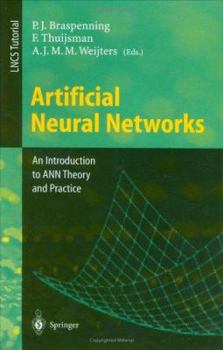Artificial Neural Networks: An Introduction to ANN Theory and Practice
This book presents carefully revised versions of tutorial lectures given during a School on Artificial Neural Networks for the industrial world held at the University of Limburg in Maastricht, Belgium. The major ANN architectures are discussed to show their powerful possibilities for empirical data analysis, particularly in situations where other methods seem to fail. Theoretical insight is offered by examining the underlying mathematical principles in a detailed, yet clear and illuminating way. Practical experience is provided by discussing several real-world applications in such areas as control, optimization, pattern recognition, software engineering, robotics, operations research, and CAM.
Format:Paperback
Language:English
ISBN:3540594884
ISBN13:9783540594888
Release Date:June 1995
Publisher:Springer
Length:299 Pages
Weight:0.97 lbs.
Dimensions:0.7" x 6.1" x 9.2"
Customer Reviews
4 customer ratings | 4 reviews
There are currently no reviews. Be the first to review this work.




















